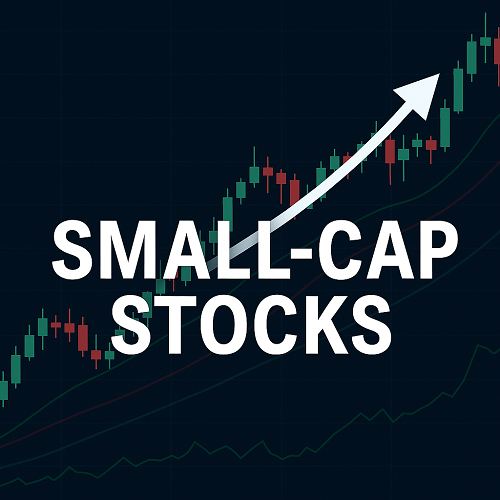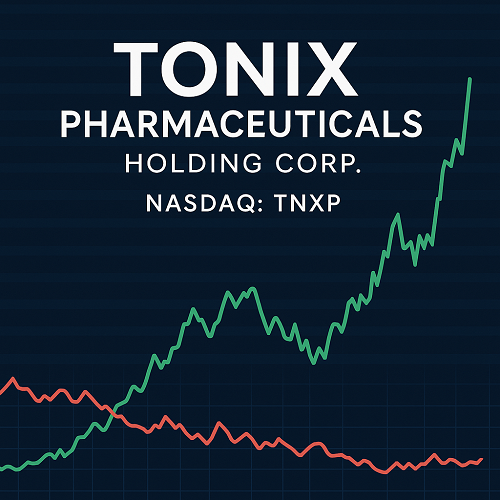Why Canadian Stocks Deserve Attention in 2025
As global markets evolve through inflationary cycles, shifting energy dynamics, and AI-driven innovation, Canadian equities are regaining attention among both domestic and international investors. The Toronto Stock Exchange (TSX) — home to world-leading financial institutions, mining giants, and energy innovators — continues to prove its resilience in volatile environments.
In 2025, Canada’s combination of resource strength, stable regulation, and steady dividend culture makes it one of the most attractive developed markets for long-term investors. Whether your focus is on steady dividend yield or aggressive growth, the TSX offers a diversified landscape that balances risk and reward better than most global indices.
This guide highlights the best Canadian stocks to buy now, organized by sector and investment goal, while sharing my process as a trader and analyst for identifying value and opportunity in the Canadian market.
Understanding the Canadian Market Landscape
The Core of the TSX
The S&P/TSX Composite Index represents about 95% of the Canadian equities market capitalization. Its heaviest sectors — financials, energy, and materials — account for more than two-thirds of the index, while technology and healthcare play smaller but growing roles.
Economic Outlook for 2025–26
- Interest rates: Expected to gradually decrease as inflation stabilizes, favouring dividend-paying equities and capital-intensive sectors.
- Energy transition: Oil sands producers and utilities with renewable portfolios stand to benefit from long-term global energy shifts.
- AI & digital infrastructure: Canada’s emerging technology ecosystem — particularly in AI, fintech, and e-commerce — is gaining international investor attention.
- Currency: A moderately strong CAD, driven by commodities, can enhance returns for U.S.-based investors seeking diversification.
Why Diversification Across Sectors Matters
Canadian markets are resource-heavy, which means cyclicality can influence returns. Diversifying into tech, healthcare, and consumer staples ensures smoother performance through market cycles.
My Selection Criteria
As a trader, I assess Canadian stocks through both fundamental and technical lenses. Here’s the framework I apply before adding a company to this list:
- Market Cap: Minimum of CAD 1 billion for liquidity and stability.
- Revenue Growth: Consistent year-over-year increase over at least three years.
- Dividend Stability: History of maintaining or raising dividends.
- Valuation Metrics: Attractive P/E or P/B relative to sector peers.
- Momentum Indicators: Healthy relative strength (RSI > 50) and upward-moving averages.
- Sector Outlook: Aligned with macro trends (e.g., energy transition, AI growth).
- Management Quality: Transparent, consistent leadership track record.
This approach combines long-term fundamentals with trading precision, giving investors confidence in both growth and income potential.
Top Canadian Stocks by Sector
Below are Canada’s strongest stocks for 2025–26, categorized by their core sector and investment thesis.
1. Financials: The Backbone of the TSX
Royal Bank of Canada (TSX: RY)
- Market Cap: ≈ $190 B
- Dividend Yield: ~4.2%
- Why it’s strong: RY remains the largest and most diversified financial institution in Canada, with leading exposure to wealth management, U.S. expansion, and digital transformation.
- Outlook: As rate cuts begin, loan growth and consumer lending should accelerate, supporting EPS growth.
Bank of Montreal (TSX: BMO)
- Dividend Yield: 4.5%
- Thesis: Its acquisition of Bank of the West expands U.S. reach, positioning BMO for continental growth. Cost synergy execution is key for margin improvement.
Intact Financial Corporation (TSX: IFC)
- Dividend Yield: 2.3%
- Why it stands out: Canada’s top property and casualty insurer with resilient underwriting discipline and recurring premium growth.
2. Energy & Utilities: The Dividend Engine of Canada
Enbridge Inc. (TSX: ENB)
- Dividend Yield: 7.5%
- Why it’s compelling: A blue-chip dividend machine with a 29-year streak of dividend increases. Despite regulatory pressures, cash flow from pipeline assets remains robust.
TC Energy (TSX: TRP)
- Dividend Yield: 6.6%
- Investment case: Expanding its gas pipeline network and diversifying into renewables. Focused on debt reduction and sustainable growth through asset sales and new project completion.
Brookfield Renewable Partners (TSX: BEP.UN)
- Dividend Yield: 5.2%
- Why I like it: A top global renewable energy operator with exposure to hydro, wind, and solar assets. Positioned to benefit from global decarbonization policies.
3. Materials & Mining: Canada’s Global Edge
Barrick Gold (TSX: ABX)
- Dividend Yield: 2.4%
- Why it’s strong: One of the world’s largest gold producers, benefiting from central bank demand for gold amid global uncertainty.
Nutrien Ltd. (TSX: NTR)
- Dividend Yield: 3.4%
- Thesis: A leading fertilizer producer capitalizing on global food demand. Cost pressures are easing, and supply-demand imbalances in potash markets support pricing.
Teck Resources (TSX: TECK.B)
- Dividend Yield: 1.3%
- Why it matters: Strong exposure to copper and zinc, both critical to the global electrification trend.
4. Technology & Innovation: Canada’s Growth Frontier
Shopify Inc. (TSX: SHOP)
- Market Cap: ≈ $110 B
- Why it’s a buy: Despite volatility, Shopify continues to expand globally in e-commerce and fintech integration. Its operating leverage is improving, and recurring revenue streams are solid.
Constellation Software (TSX: CSU)
- Dividend Yield: 0.2%
- Thesis: One of the best-performing Canadian stocks of the past decade. Its decentralized acquisition strategy across vertical markets continues to generate compounding returns.
Lightspeed Commerce (TSX: LSPD)
- Dividend: N/A (growth-focused)
- Why it’s promising: With small business adoption growing in retail and hospitality, Lightspeed’s profitability pivot could re-rate its stock sharply in 2025.
5. Consumer & Industrial Leaders
Canadian National Railway (TSX: CNR)
- Dividend Yield: 2.1%
- Thesis: A North American logistics powerhouse with efficient cost management and resilient trade demand. Long-term compounder with defensive attributes.
Dollarama Inc. (TSX: DOL)
- Dividend Yield: 0.4%
- Why it’s resilient: Consumer staple resilience, consistent revenue growth, and aggressive international expansion through Dollarcity.
Magna International (TSX: MG)
- Dividend Yield: 2.8%
- Why I’m watching it: A key player in the EV supply chain with a global footprint. Margin recovery expected as cost pressures ease.
6. Dividend Powerhouses for Passive Income
For investors who prioritize steady income over capital appreciation, these stocks deliver strong, consistent dividends:
| Company | Ticker | Dividend Yield | Dividend Growth Streak |
|---|---|---|---|
| Enbridge | ENB | 7.5% | 29 years |
| Fortis Inc. | FTS | 3.9% | 50 years |
| Canadian Utilities | CU | 5.2% | 52 years |
| Bank of Nova Scotia | BNS | 6.1% | 191 years of uninterrupted dividends |
| BCE Inc. | BCE | 6.8% | 15 years of increases |
These names are ideal for RRSP or TFSA investors seeking stable compounding income.
How to Buy Canadian Stocks
For Canadian Investors
You can access all TSX-listed stocks through platforms such as:
- Wealthsimple Trade (zero commissions)
- Questrade (low cost with U.S. dual-currency accounts)
- RBC Direct Investing or TD Direct Investing (for integration with your main banking accounts)
For International Investors
Non-residents can buy TSX-listed shares through brokers like Interactive Brokers, Fidelity, or Charles Schwab International. Many leading Canadian stocks also have dual U.S. listings (e.g., RY, ENB, SHOP).
Tax Note
Dividends paid to non-residents may be subject to a 15% withholding tax under Canada’s tax treaties, but this can often be claimed as a foreign tax credit.
Building a Canadian Equity Portfolio
A balanced Canadian portfolio might include:
- 40% financials and dividend stocks (RBC, ENB, FTS)
- 30% growth and innovation (SHOP, CSU, LSPD)
- 20% resources and materials (TECK, NTR)
- 10% defensive/consumer staples (DOL, CNR)
Diversification reduces exposure to commodity and interest rate cycles.
Risk Considerations
Even the best Canadian stocks carry risks:
- Commodity exposure: Fluctuating oil and mineral prices can impact TSX performance.
- Regulatory environment: Energy and mining sectors face environmental policy headwinds.
- Currency risk: A rising CAD can reduce foreign investor returns.
- Concentration: Heavy exposure to financials and energy means market-wide drawdowns can be correlated.
Mitigate these by combining Canadian holdings with U.S. or international equities, ETFs, or bonds.
Final Thoughts
Canadian equities offer a powerful blend of income stability and growth opportunity. With prudent stock selection and disciplined risk management, investors can benefit from the unique advantages Canada provides — global resource leadership, stable banking, and expanding innovation.
As a trader who’s navigated cycles across stocks, forex, and crypto, I view Canada’s 2025–26 market setup as structurally bullish — especially for investors who reinvest dividends and take a long-term perspective.
The companies listed here are not hype plays; they’re foundational assets that can anchor a portfolio through volatility while compounding steadily over time.





 XAUT-USD
XAUT-USD  AMD
AMD  MARA
MARA  SHOP
SHOP  BULL
BULL  CL=F
CL=F